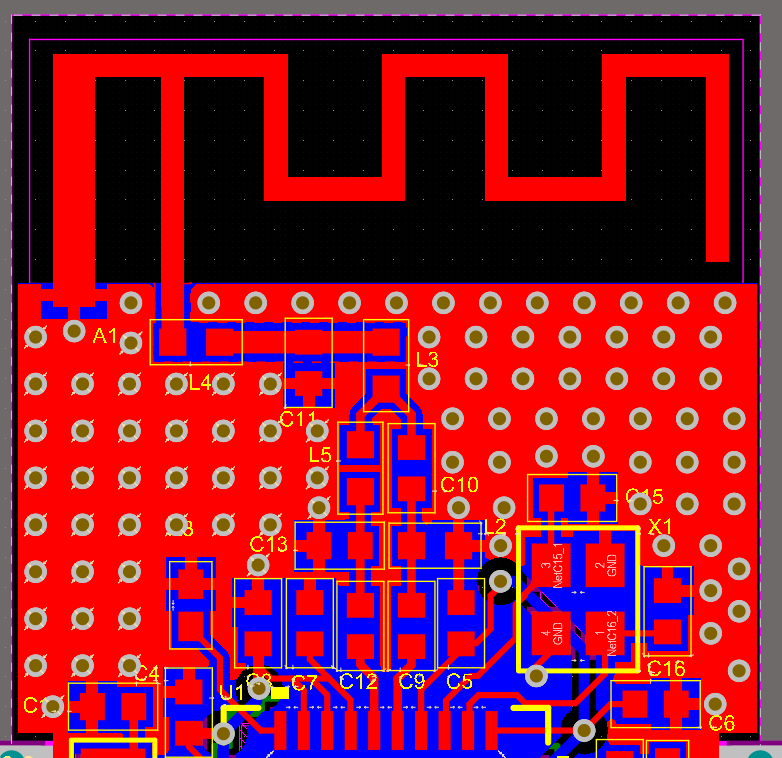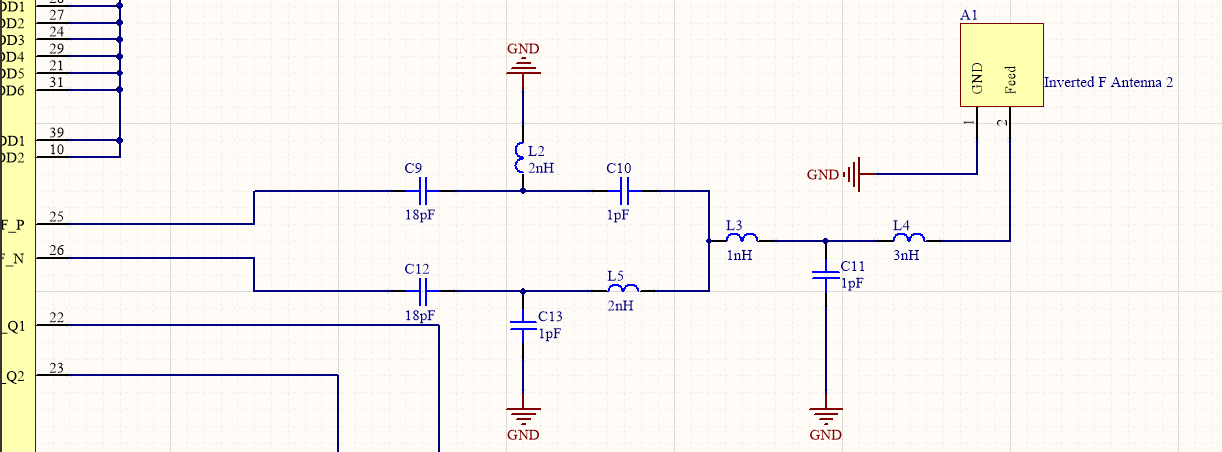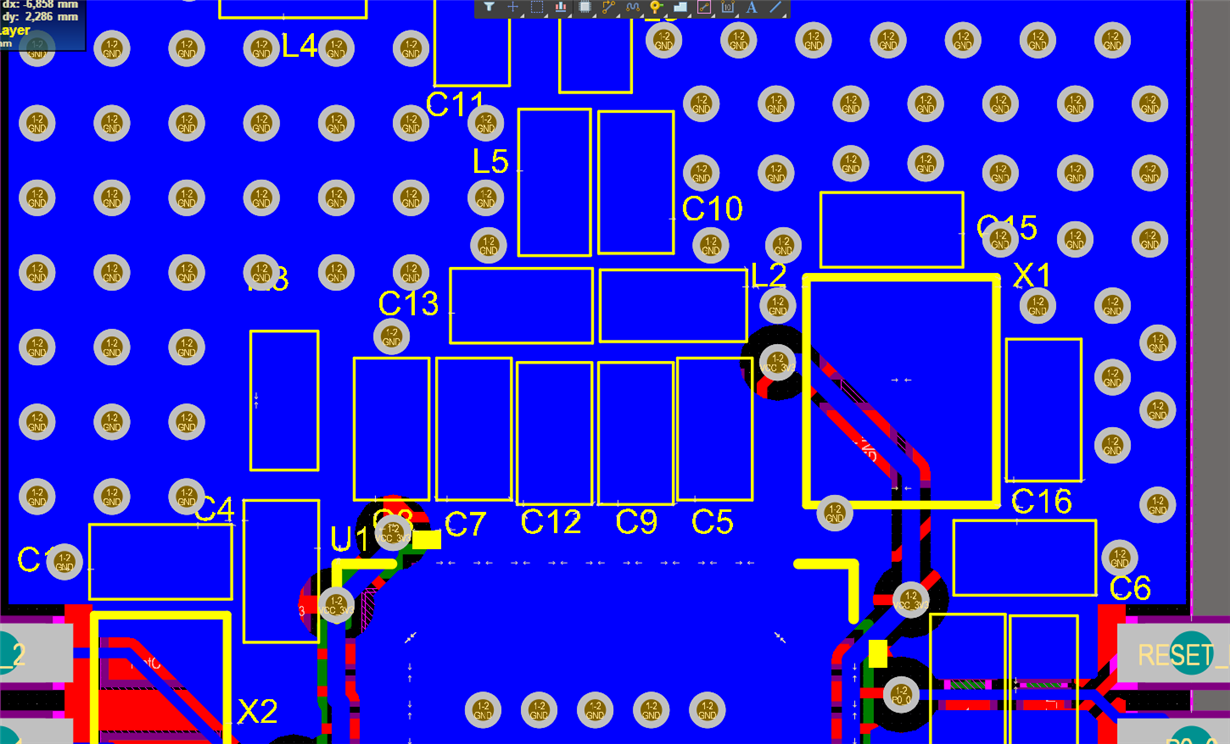Other Parts Discussed in Thread: CC2541
Hi all,
I am working on design CC2541 and AN043 PCB antenna. I'm doing bluetooth design for the first time.
I used EM reference Design and AN043 as a reference design. I used TXLINE 2003 for the 50 ohm impedance calculation. I share the layout and calculation of the 50 ohm impedance.
Because the cost and the small board is important for AN043 and I did 2 layer board design. I set all the pins to pinout.
Your comments about layout are very important to me. If it is missing or wrong, I will correct it and send it to produce.
Last question, How do I access the chip with pinouts except cc debugger? any suggestions??




